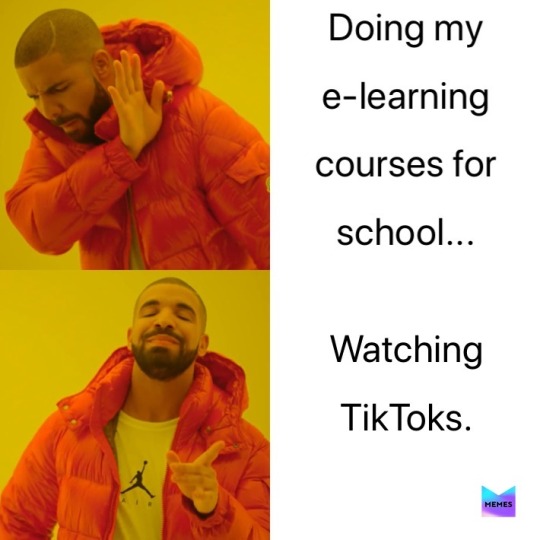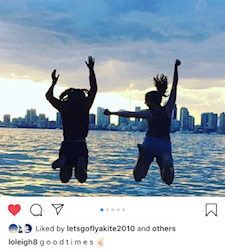Text
Internet and education

As we discussed in class, all media have social and political implications. The Ontario government is planning to require high school students take two to four online e-courses in order to graduate; however, the subject matter and cost of these courses is undetermined. It is unclear how e-courses are a good thing for the board’s students and academic success.
I do not think students should be forced to take online courses and it should be a matter of student choice. In my assessment, the main disadvantages of mandatory e-learning are: not all students are self-disciplined, self-motivated or work well independently; not all students have access to a home computer and internet, there is no face to face interaction, there is a potential lack of input from teachers, and slow evaluation. I know a college professor who says, he and many of colleagues find that either half of the e-learning students don’t do the work or drop the course and the other half find it difficult to keep the discipline to continue the course.
Many students have different learning styles and concentration spans. Personally, I cannot stare at a document for long without getting lost or distracted. Mandatory e-learning does not take into consideration the different varieties of learners in the school board, for example, kinesthetic, social, verbal and auditory learners. E-learning favours logical, visual and solitary learners. In a recent article in the Hamilton Spectator, one mother described her son after taking an e-course as being “full of tears, frustration and full of self-doubt.” The Spectator further reported that students from challenged backgrounds did not succeed in online courses and that there is a 45% dropout / failure rate in all e-learning courses and the majority of grade 9 and 10 students do not complete the e-course.
There will be many academic and social changes among students when e-learning becomes mandatory. For example, many students will have to turn to social media for social experiences/contact, marks will drop for many students, lack of school spirit and school experience, and not all courses are meant to be taken online. Beyhand Farhadi conducted a year long study of elearning in Ontario and found:
Virtual classes are video conferences where students can meet the teacher and peers in real time to ask questions and review content. The teacher records the class and posts it on the homepage so students can access the sessions. Virtual classes are poorly attended in real time, and students I interviewed inconsistently watched the recording after it was posted. Since flexibility is one benefit of e-learning, teachers can’t force students to attend a live virtual class.
In Ontario, we will continue to see the social and political implications of e-learning over the coming months and years, especially in media. According to experts, “quality e-learning programs cost as much as or more than the traditional classroom model.”
0 notes
Text
I’m on TikTok and I have no shame
Does TikTok promote shamelessness in a way that is unique among social media apps? Read and respond to Nicholas Carr’s essay
shameless
adj
1. having no sense of shame; brazen
2. done without shame; without decency or modesty

TikTok is one of the most popular social media platforms in the world, ranking second on the world charts of Apple’s App Store. According to a New Yorker article “How Tik Tok holds our attention”, the app has been downloaded more than a billion times since 2017. Formally known as Musical.ly, TikTok is the platform to showcase your talents such as dancing, singing, telling jokes (or generally to do funny things), or even just falling. The point to share your “talent” and to get famous highly indulges lack of shame. It seems the more shamelessness you put into your fifteen second video, the more popular the video.
TikTok is similar and different to many social platforms. It is similar to almost all social platforms because it has hearts “likes” (which users depend on), it has influencers, comments, live streams, filters and advertising. It is different among social media apps because its goal is to get on the “for you” page, it is talent focused, there is less political content, it is all short videos and most set to music, there are comedic qualities, many different challenges, and it promotes shamelessness.
On TikTok, users watch and post often silly, crazy 15 second videos synced to music. The crazier the content, the more popular for viewers. For example, Charli D’Amelio, is a fifteen-year-old TikTok Queen from Connecticut just dances around to the same songs over and over again and gets millions of hearts and followers. Her attraction is her infectious personality and lacks any restraint. She just looks like she’s having fun and has no regrets about her posts. Almost everyone on TikTok can get their fifteen seconds of fame or shame, and as we learned in class “medium is the message”, which relates to TikTok because it’s so accessible and it has a large assortment of videos, it gives its users a higher chance of being famous than other apps. Nicholas Carr writes about how shameless on TikTok enhances the experience of TikTok.
In “Tik Tok and the coming of infinite media” on roughtype.com , Nicholas Carr analyses the Tik Tok application from the perspective the “ medium is the message.” In his assessment, TikTok is an addictive “never ending talent show,” where everyone's competing for the same thing… hearts. Carr takes reports and studies from scientists and journalists showing that many people get stuck scrolling on the cinema/for you page of TikTok for hours on end, that is true.
I do not have a Tik Tok account, but I find myself watching TikTok videos for hours and hours via Instagram, so I can relate (I’m a TikTok Addict who doesn’t have TikTok). In Carr’s assessment, there is only one reason for TikTok to be seen, by getting hearts. Hearts/likes seem to be on every social media user’s mind, especially on TikTok. On TikTok, hearts are approval of your “talent”, video, or looks. Generally that boosts or tears down someone’s confidence. In Carr’s essay he interviews someone who states, “When I tap the heart on some high school kid’s weird video, I feel a flicker of pride, as if I am supporting him in some way. But all I am really doing is demanding more.” This statement seems to relate to many people, because if you like someone’s video or post on any social media, then they feel a higher demand to post more and more, like when I first got Instagram I was completely obsessed with posting and getting likes from my friends, so I would post literally every day.
With the promotion of shamelessness on TikTok and the way the app is built, to get hearts and to stay on it as long as possible, no wonder TikTok is one of the most popular social media platforms today.
0 notes
Text
Constructing you, deconstructing others on social media
“All media are construction / media constructs reality”

This photo… It's cool, right? Friends at the lake on a hot summer evening doing the High School Musical jump, while the sun is setting.
Reality ? Not really...
The funny thing is the scene is constructed, heavily edited (haha thanks VSCO, PicsArt, and Instagram)… and it took us many tries to get the photo right, and still we had to use the choose your frame Live Photo feature to get it just right. This is a photo of my friend and I at Toronto Island (no it is not a Muskoka cottage weekend!). Little does the viewer know I was just there for the evening visiting with her family and her sister's friend… where are they? Oh they are in the back and they were asked to stay by their AirBnB. This photo was highly constructed to look like we were having a good time, but my buddy had a really bad cold, I had just been bitten by a tick and 2 ants, we got scared by a snake and we had undercooked hamburgers. G o o d t i m e s, well that’s not fully true. This is just one example of the many ways we construct ourselves on social media to make us seem like we are having a good time, when actually you end up having to take Lyme disease prophylactic medicine necessitating the need to stay out of the sunshine for the rest of the summer.
I have really come to see that these online identities are present and on almost every social media platform, from VSCO girls to full out goths. Every day I look at my explore page and see people of all different labels and styles. They are all doing fun things like going to parties, eating cool food, and going to concerts and then I realize it is curated, heavily edited and staged, and even the things that look really real seem to be fake.
Social media seems like harmless fun, but when another one of my friends saw this photo she became upset with me because of her FOMO (fear of missing out).
In our class discussion, we discussed how Instagram is one of the worst social media platforms for mental health and well-being and it is associated high levels of anxiety, bullying, depression and FOMO according to a recent study of 1500 teenagers. In response to criticism, Instagram began hiding the number of likes so that users may feel more comfortable posting and sharing images. It is too early to know whether this has had a positive impact on the mental health of Instagram users.
One of the concerns is users attempt to construct their identity based on unattainable, heavily-edited photos. Further, they need the affirmation of likes of their followers to validate their self-worth. When scrolling through an Instagram feed, you must view the images with care and the understanding that this social feed or virtual world is constructed.
1 note
·
View note